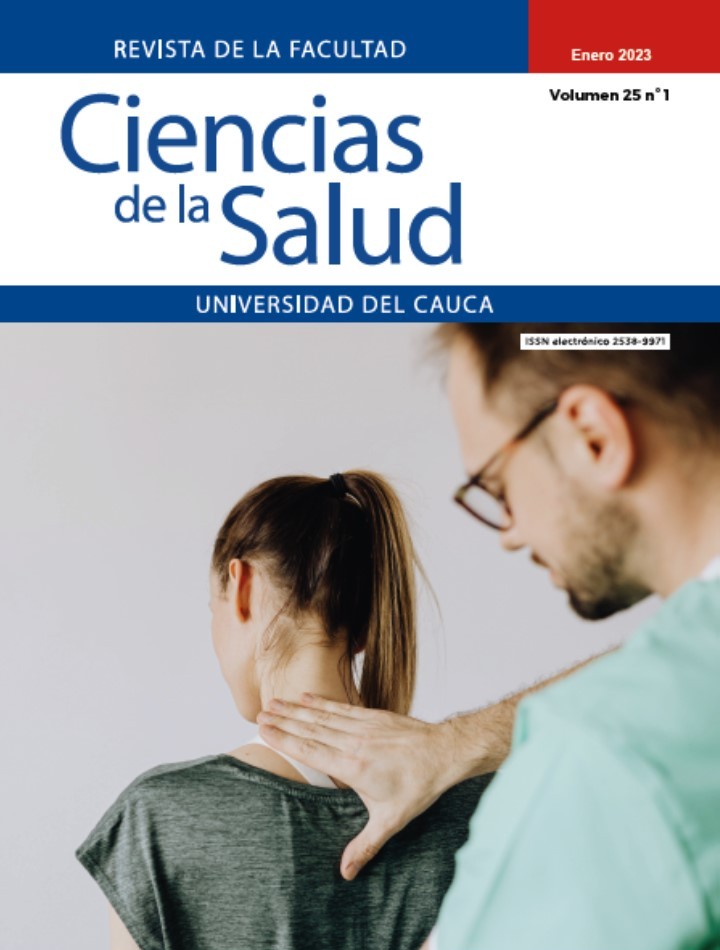Dermatitis atópica en pacientes hermanas: caso clínico y consideraciones sobre consanguinidad en dermatitis atópica
Resumen
Objetivo: En el presente reporte de caso, se discute la diferencia de presentación clínica en dos hermanas afectadas por dermatitis atópica y se hace una breve revisión de la literatura respecto a la asociación existente entre hermanos y los factores que pueden influir en las características y evolución de la enfermedad en pacientes con dermatitis atópica.
Descripción breve del caso: Se describe la presentación de dermatitis atópica en dos pacientes hermanas que debutan con una severidad de enfermedad parecida, pero levemente mayor y con evolución distinta en la hermana menor, quien no presentó mejoría al régimen terapéutico inicial y necesitó ampliar paraclínicos. Se observa componente alérgico a metales y se decide escalar hacia un tratamiento biológico (Dupilumab).
Conclusiones: La dermatitis atópica es una enfermedad de manifestación clínica y paraclínica heterogénea en la que convergen múltiples mecanismos fisiopatológicos intrínsecos y extrínsecos. La asociación sobre predisposición genética, herencia, microbioma y otros factores posiblemente implicados en la presentación de la dermatitis atópica entre hermanos afectados todavía no está definida, por lo que se recomienda realizar estudios que evalúen la importancia de este factor y de variables asociadas.
Descargas
Disciplinas:
Dermatologia, Salud PúblicaReferencias bibliográficas
Langan SM, Irvine AD, Weidinger S. Atopic dermatitis. Lancet. 2020;396(10247):345-60. doi: http://dx.doi.org/10.1016/S0140-6736(20)31286-1
Ständer S. Atopic Dermatitis. N Engl J Med. 202;384(12):1136-43. https://doi.org/10.1056/NEJMra2023911
Grettchen FS. Factores Genéticos y Epigenéticos en la Patogénesis de la Dermatitis Atópica. Rev Clin Esc Med. 2018;8(6):37-44. doi: https://doi.org/10.15517/rc_ucr-hsjd.v8i6.36067
Salvati L, Cosmi L, Annunziato F. From emollients to biologicals: Targeting atopic dermatitis. Int J Mol Sci. 2021;22(19). doi: https://doi.org/10.3390/ijms221910381
Sanchez J, Cherrez-Ojeda I, Galvan C, Garcia E, Hernández-Mantilla N, Londoño Garcia A, et al. The Unmet Needs in Atopic Dermatitis Control in Latin America: A Multidisciplinary Expert Perspective. Dermatol Ther (Heidelb). 2021;11(5):1521-40. doi: https://doi.org/10.1007/s13555-021-00595-9
Tokura Y, Hayano S. Subtypes of atopic dermatitis: From phenotype to endotype. Allergol Int. 2022;71(1):14-24. doi: https://doi.org/10.1016/j.alit.2021.07.003
Seegräber M, Srour J, Walter A, Knop M, Wollenberg A. Dupilumab for treatment of atopic dermatitis. Expert Rev Clin Pharmacol. 2018;11(5):467-74. doi: https://doi.org/10.1080/17512433.2018.1449642
Ferreira S, Torres T. Dupilumab para el tratamiento de la dermatitis atópica. Actas Dermosifiliogr. 2018;109(3):230-40. doi: https://doi.org/10.1016/j.ad.2017.10.012
Gooderham MJ, Hong HC, Eshtiaghi P, Papp KA. Dupilumab: A review of its use in the treatment of atopic dermatitis. J Am Acad Dermatol. 2018;78(3):S28-36. doi: https://doi.org/10.1016/j.jaad.2017.12.022
Kamata M, Tada Y. A Literature Review of Real-World Effectiveness and Safety of Dupilumab for Atopic Dermatitis. JID Innov. 202;1(3):100042. doi: https://doi.org/10.1016/j.xjidi.2021.100042
Huerta J, Del Olmo H, Valdés D. Prevalencia y factores asociados a rinitis alérgica y dermatitis atópica en niños. Allergol Immunopathol (Madr). 2008;17(2):54-64. doi: https://www.medigraphic.com/cgi-bin/new/resumen.cgi?IDARTICULO=24118
Dei-Cas PG, Acuña MK, Dei-Cas I. Dermatitis atópica en niños: estudio comparativo en dos grupos etarios. Rev Chil pediatría. 2011;82(5):410-8. doi: http://dx.doi.org/10.4067/S0370-41062011000500006
Khan SJ, Dharmage SC, Matheson MC, Gurrin LC. Is the atopic march related to confounding by genetics and early-life environment? A systematic review of sibship and twin data. Allergy. 201;73(1):17-28. doi: https://doi.org/10.1111/all.13228
Maldonado-Gómez W, Guevara-Vásquez G. Asociación entre presencia de hermanos y dermatitis atópica en un hospital de tercer nivel de atención. Actas Dermosifiliogr. 2022;113(3):322-5. doi: https://doi.org/10.1016/j.ad.2020.05.020
Nance CL, Deniskin R, Diaz VC, Paul M, Anvari S, Anagnostou A. The Role of the Microbiome in Food Allergy: A Review. Child (Basel). 202;7(6). doi: https://doi.org/10.3390/children7060050
Randi G, Altieri A, Chatenoud L, Chiaffarino F, La Vecchia C. Infections and atopy: an exploratory study for a meta-analysis of the “hygiene hypothesis”. Rev Epidemiol Sante Publique. 2004;52(6):565-74. doi: https://doi.org/10.1016/S0398-7620(04)99095-5
Karmaus W, Arshad SH, Sadeghnejad A, Twiselton R. Does maternal immunoglobulin E decrease with increasing order of live offspring? Investigation into maternal immune tolerance. Clin Exp Allergy. 200;34(6):853-9. doi: https://doi.org/10.1111/j.1365-2222.2004.01959.x
Cramer C, Link E, Horster M, Koletzko S, Bauer C-P, Berdel D, et al. Elder siblings enhance the effect of filaggrin mutations on childhood eczema: results from the 2 birth cohort studies LISAplus and GINIplus. J Allergy Clin Immunol. 2010;125(6):1254-1260. doi: https://doi.org/10.1016/j.jaci.2010.03.036
Derechos de autor 2023 Universidad del Cauca

Esta obra está bajo una licencia internacional Creative Commons Atribución-NoComercial-SinDerivadas 4.0.












.png)



